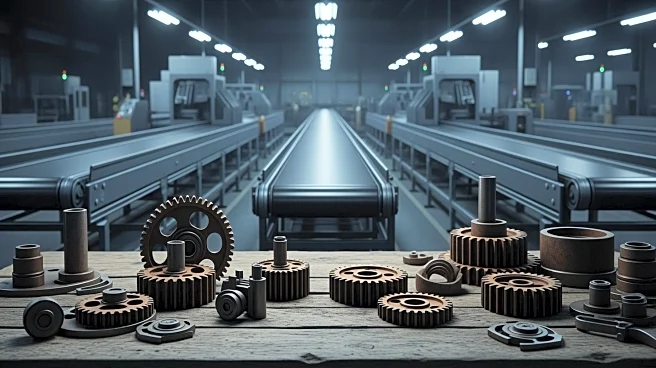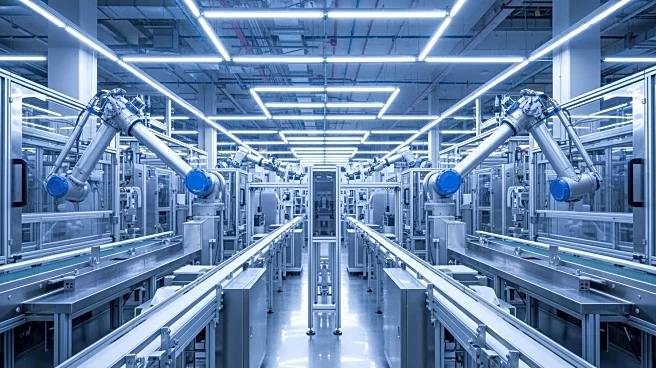What's Happening?
The manufacturing sector in the United States is experiencing significant challenges, as highlighted in IndustryWeek's Weekly Review. Recent data indicates a sharp increase in job cuts, with October witnessing
the highest number of job losses since 2003. This represents a 183% increase compared to September and a 175% rise from October 2024. The economic power of manufacturing is reportedly underestimated, with official measurements failing to capture the full scope of jobs tied to the industry, its value-add to the U.S. economy, and the innovation it generates. Additionally, companies like Cummins are conducting reviews of their business operations amid rapidly deteriorating market conditions, exemplified by Accelera's $336 million EBITDA loss last quarter. Furthermore, distributor CEOs from MSC Industrial Supply and W.W. Grainger have noted that suppliers are raising prices rapidly, exacerbating inflationary pressures within the manufacturing supply chain.
Why It's Important?
The challenges faced by the manufacturing sector have broad implications for the U.S. economy. The increase in job cuts could lead to higher unemployment rates, affecting consumer spending and economic growth. The underestimation of manufacturing's economic power suggests that policymakers may not fully appreciate the sector's contribution to innovation and job creation. The ongoing price hikes driven by tariffs and supply chain inflation could result in higher costs for consumers and businesses, potentially stifling economic recovery efforts. Companies like Cummins reviewing their business operations indicate a need for strategic adjustments to navigate the current economic landscape, which could lead to further restructuring and job losses.
What's Next?
As the manufacturing sector grapples with these challenges, stakeholders may need to consider strategic interventions to mitigate the impact of job losses and inflation. Policymakers could explore measures to support the industry, such as tax incentives or subsidies, to encourage investment and job creation. Companies may need to innovate and adapt their business models to remain competitive in a rapidly changing market. The focus on digital transformation, as highlighted by the concept of Industrial Data Fabric, could offer pathways for companies to enhance efficiency and resilience. Additionally, the sector may see increased collaboration between businesses and government to address supply chain issues and stabilize prices.
Beyond the Headlines
The current situation in the manufacturing sector underscores the need for a comprehensive understanding of its economic contributions. The underestimation of its power suggests a gap in economic analysis that could affect policy decisions. The emphasis on digital transformation and AI in manufacturing points to a shift towards more technologically advanced operations, which could redefine job roles and require new skill sets. The sector's challenges also highlight the interconnectedness of global supply chains and the impact of international trade policies on domestic industries.












